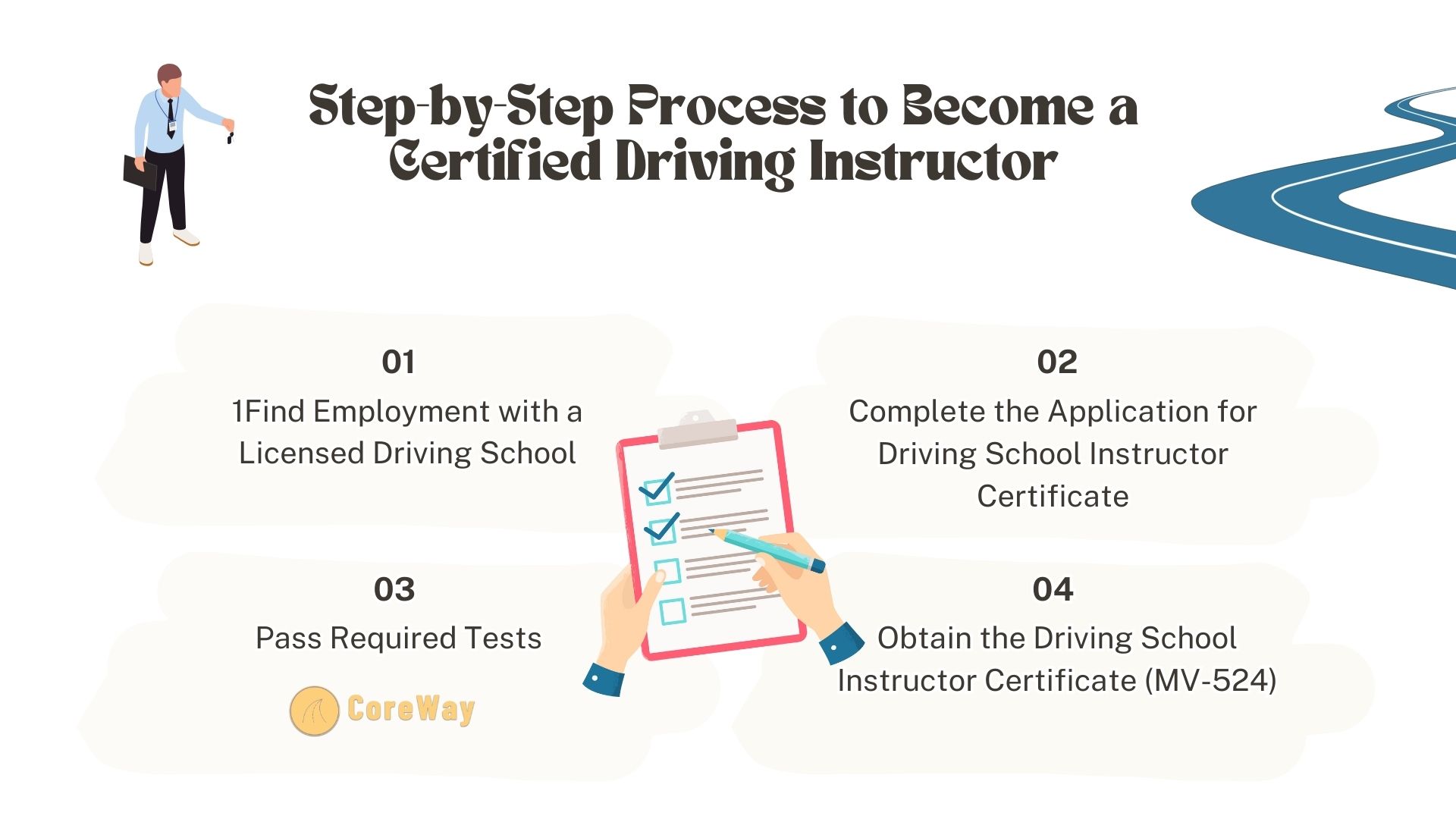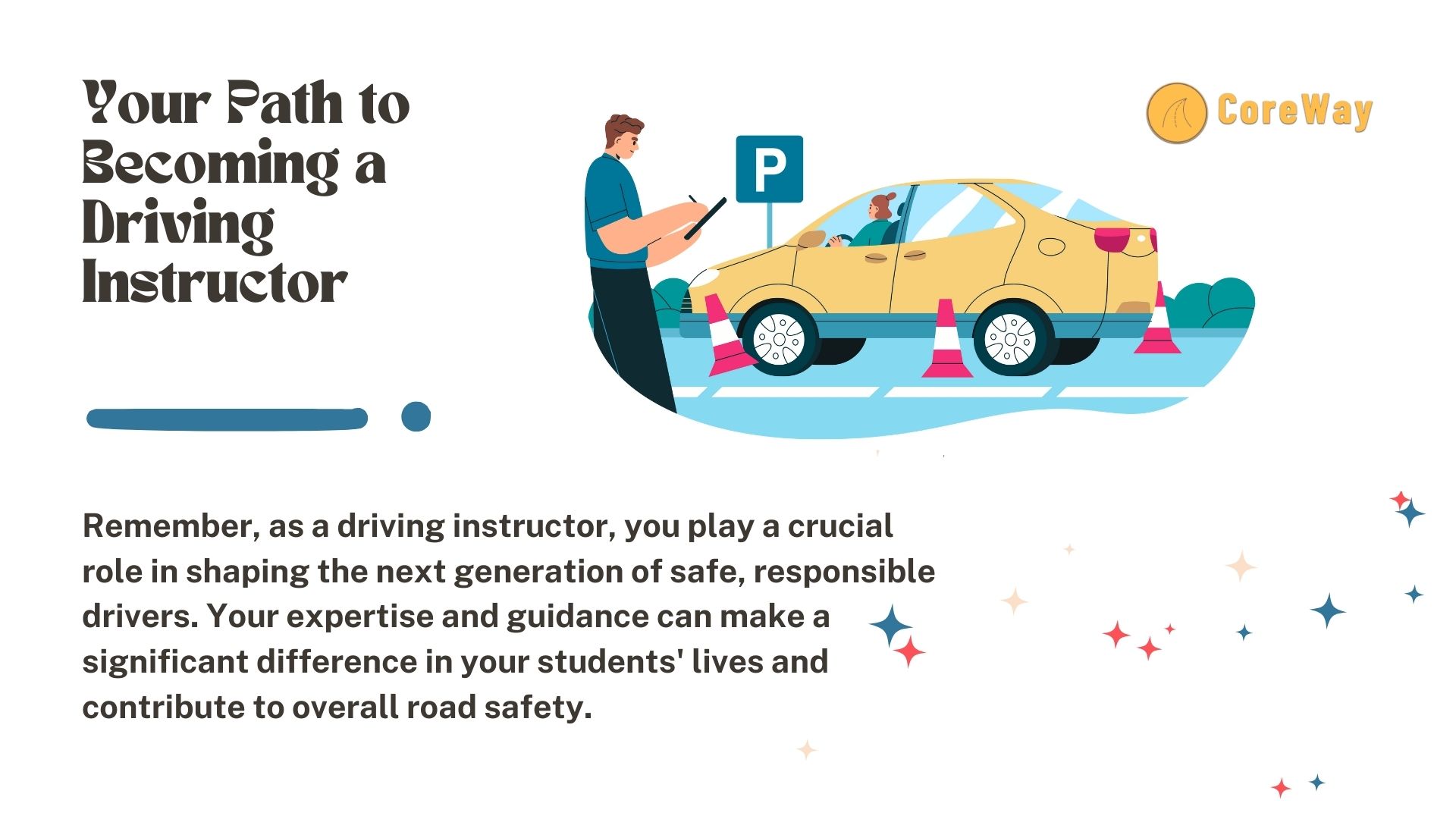How to Become a Driving Instructor: A Comprehensive Guide

Table of Contents
- Why Become a Driving Instructor?
- Basic Requirements for Becoming a Driving Instructor
- Step-by-Step Process to Become a Certified Driving Instructor
- Additional Certifications and Training
- The Approved Driving Instructor (ADI) Examination
- Maintaining Your Certification
- Building Your Career as a Driving Instructor
- Vehicle and Equipment Requirements
- Legal and Ethical Considerations
- Your Path to Becoming a Driving Instructor
Are you passionate about driving and eager to share your knowledge with others? Becoming a driving instructor can be a rewarding career choice that allows you to teach new drivers the essential skills they need to navigate the roads safely. In this comprehensive guide, we'll walk you through the steps to become a certified driving instructor and join the ranks of professionals making a difference every day.
Why Become a Driving Instructor?
Before diving into the process, let's explore why becoming a driving instructor is an excellent career choice:
- Fulfillment: Help new drivers gain confidence and independence
- Flexibility: Enjoy flexible working hours and diverse work shifts
- Demand: Experience job stability due to consistent demand for instructors
- Variety: Encounter new students and unique teaching experiences daily
Basic Requirements for Becoming a Driving Instructor
To start your journey as a driving school instructor, you must meet several basic criteria:
|
Requirement |
Details |
|
Age |
Must be at least 21 years old |
|
Driving Experience |
Valid driver's license for at least 2-3 years |
|
Driving Record |
Clean record with no more than 6 penalty points |
|
Education |
High school diploma or equivalent |
Call Us Today 6AM-10PM
Or fill out the form 24/7
Our team is here to guide you with promotions, instructor availability, and the best training package for you.
Step-by-Step Process to Become a Certified Driving Instructor

1. Find Employment with a Licensed Driving School
Your first step is to secure employment with a DMV-licensed driving school. This is crucial as you need sponsorship from a school to proceed with certification.
2. Complete the Application for Driving School Instructor Certificate
Fill out the MV-523 form (Application for Driving School Instructor Certificate) provided by the New York State Department of Motor Vehicles (DMV). Ensure you answer all questions thoroughly and provide any necessary explanations or documentation.
3. Pass Required Tests
To obtain your Driving School Instructor Certificate, you must pass several tests:
- Vision Test: Similar to a standard driver's license vision test
- Road Sign Test: Evaluates your knowledge of road signs
- Written Test: Based on the Driver's Manual, Commissioner's Regulations, and Vehicle & Traffic Law
- Behind-the-Wheel Instructor's Driving Test: Assesses your driving ability and instruction skills
4. Obtain the Driving School Instructor Certificate (MV-524)
After passing all tests, the Bureau of Driver Training Programs will issue your Instructor Certificate (MV-524). This certificate authorizes you to teach for the specific driving school named on it.
Additional Certifications and Training
To enhance your qualifications and maintain your certification, you'll need to complete additional training:
- Methods and Content Course for In-Car Instruction (MCCII): A 30-hour course required before your first certificate renewal
- Teaching Techniques and Methodology Course: A 30-hour course required if you want to teach the Pre-licensing Course
The Approved Driving Instructor (ADI) Examination
To become a fully qualified driving instructor, you'll need to pass the Approved Driving Instructor (ADI) examination. This comprehensive assessment consists of three parts:
Part 1: Theory Test
The theory test evaluates your knowledge of driving laws, traffic signs, and driving theory. It includes:
- Multiple-choice questions
- Hazard perception test
Tip: Study the Driver's Manual thoroughly and practice hazard perception tests online to prepare.
Part 2: Driving Ability Test
This practical test assesses your personal driving skills. You'll need to demonstrate:
- High standard of driving
- Ability to perform various maneuvers
- Independent driving skills
- Strict adherence to road rules
Note: This test is more rigorous than a standard driving test, so practice advanced driving techniques.
Part 3: Instructional Ability Test
The final part evaluates your teaching skills. An examiner will observe you:
- Giving a driving lesson to a learner
- Communicating instructions clearly and effectively
- Providing constructive feedback
Pro tip: Consider enrolling in a driving instructor training course to hone your teaching skills before this test.
Maintaining Your Certification
Becoming a certified driving instructor is just the beginning. To maintain your status and excel in your career, you'll need to:
- Renew your ADI license every 4 years
- Engage in continuing education
- Stay updated on driving regulations and teaching techniques
Continuing Professional Development
To stay at the top of your game, consider:
- Attending workshops and seminars
- Participating in online courses
- Joining professional associations for driving instructors
Building Your Career as a Driving Instructor
Once certified, it's time to build your career. Here are some strategies to succeed:
- Join a reputable driving school: Look for schools with good reputations and steady student flows.
- Develop essential skills:
- Patience
- Clear communication
- Organizational abilities
- Understand work shift options: Driving schools often offer flexible schedules, including:
- Weekday shifts (typically 7:00 AM - 5:00 PM)
- Evening shifts (5:00 PM - 9:00 PM)
- Weekend shifts (8:00 AM - 6:00 PM)
Potential Earnings
While rates can vary, driving instructors can expect to earn between $17 to $20 per hour, with potential for growth as you gain experience and additional certifications.
Vehicle and Equipment Requirements
As a driving instructor, you'll need to ensure your vehicle meets specific requirements:
- Dual-control brake
- Additional rear-view mirrors for the instructor
- "Student Driver" signage
- Regular maintenance and safety checks
Important: Keep an updated list of vehicles used for instruction (MV-527 form) and submit it to the DMV.
Legal and Ethical Considerations
As a certified driving instructor, you have a responsibility to uphold legal and ethical standards. This section covers key considerations to ensure you maintain professionalism and comply with regulations.
Following State and Local Regulations
- Familiarize yourself with DMV regulations:
- Study the Commissioner's Regulations Part 76
- Review Section 394 of the New York State Vehicle & Traffic Law
- Comply with local business regulations:
- Ensure your driving school meets all municipal requirements
- Display required signage, including your driving school license and hours of operation
Maintaining Professionalism and Ethical Standards
- Prioritize student safety: Always put the safety of your students first during lessons.
- Provide quality instruction: Offer comprehensive, up-to-date training tailored to each student's needs.
- Respect student privacy: Maintain confidentiality regarding student information and progress.
- Avoid conflicts of interest: Don't engage in activities that could compromise your objectivity as an instructor.
Proper Record-Keeping and Documentation
Maintaining accurate records is crucial for both legal compliance and professional integrity:
- Student records: Keep detailed logs of lessons, progress, and payments
- Vehicle maintenance: Document all vehicle inspections and maintenance
- Certification documents: Safely store copies of your instructor certificate and other qualifications
Pro tip: Implement a digital record-keeping system to streamline your documentation process and ensure easy access to important information.
Call Us Today 6AM-10PM
Or fill out the form 24/7
Our team is here to guide you with promotions, instructor availability, and the best training package for you.
Your Path to Becoming a Driving Instructor

Becoming a driving school instructor is a rewarding journey that requires dedication, patience, and a commitment to ongoing learning. Let's recap the key steps:
- Meet basic requirements (age, driving experience, education)
- Secure employment with a licensed driving school
- Complete the Application for Driving School Instructor Certificate (MV-523)
- Pass required tests (vision, road sign, written, and practical)
- Obtain your Driving School Instructor Certificate (MV-524)
- Complete additional certifications (MCCII, Teaching Techniques course)
- Pass the Approved Driving Instructor (ADI) examination
- Maintain your certification through ongoing education and license renewal
Remember, as a driving instructor, you play a crucial role in shaping the next generation of safe, responsible drivers. Your expertise and guidance can make a significant difference in your students' lives and contribute to overall road safety.
Call Us Today 6AM-10PM
Or fill out the form 24/7
Our team is here to guide you with promotions, instructor availability, and the best training package for you.
Frequently Asked Questions
-
What are the basic requirements to become a driving instructor?
The basic requirements include: Being at least 21 years old, Having a valid driver's license for at least 2-3 years, Possessing a clean driving record, Having a high school diploma or equivalent
-
What tests do I need to pass to become a certified driving instructor?
You need to pass the following tests: Vision test, Road sign test, Written test, Behind-the-wheel instructor's driving test
-
What is the Approved Driving Instructor (ADI) examination?
The ADI examination consists of three parts:Theory Test (multiple-choice questions and hazard perception), Driving Ability Test (practical driving assessment), Instructional Ability Test (demonstrating teaching skills)
-
Do I need additional training after becoming certified?
Yes, you need to complete a 30-hour Methods and Content Course for In-Car Instruction (MCCII) before your first certificate renewal.
-
Can I teach the Pre-licensing Course?
To teach the Pre-licensing Course, you must: Complete a 30-hour Teaching Techniques and Methodology course, Have at least one year of experience as a behind-the-wheel certified driving school instructor
-
How often do I need to renew my Driving School Instructor Certificate?
The ADI license needs to be renewed every 4 years.
-
What kind of work schedules are available for driving instructors?
Driving schools often offer flexible schedules, including: Weekday shifts (typically 7:00 AM - 5:00 PM), Evening shifts (5:00 PM - 9:00 PM), Weekend shifts (8:00 AM - 6:00 PM)
-
What is the typical pay range for driving instructors?
Based on the information provided, driving instructors can expect to earn between $17 to $20 per hour, with potential for growth as you gain experience and additional certifications.
-
Do I need my own vehicle to be a driving instructor?
It depends on the driving school. Some provide vehicles, while others may require instructors to use their own cars. If using your own vehicle, it must meet specific requirements such as dual-control brakes and additional mirrors.
-
How do I apply to become a driving instructor?
The process involves: Finding employment with a licensed driving school, Completing the Application for Driving School Instructor Certificate (MV-523), Submitting the application along with required documents and fees to the DMV. Remember to check with your local Department of Motor Vehicles for the most up-to-date information and requirements, as they may vary by state or change over time.
 English
English Spanish
Spanish 

